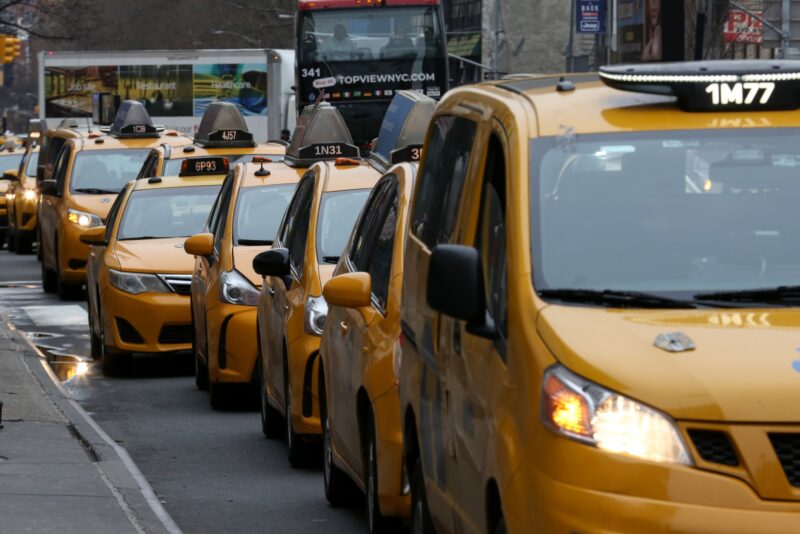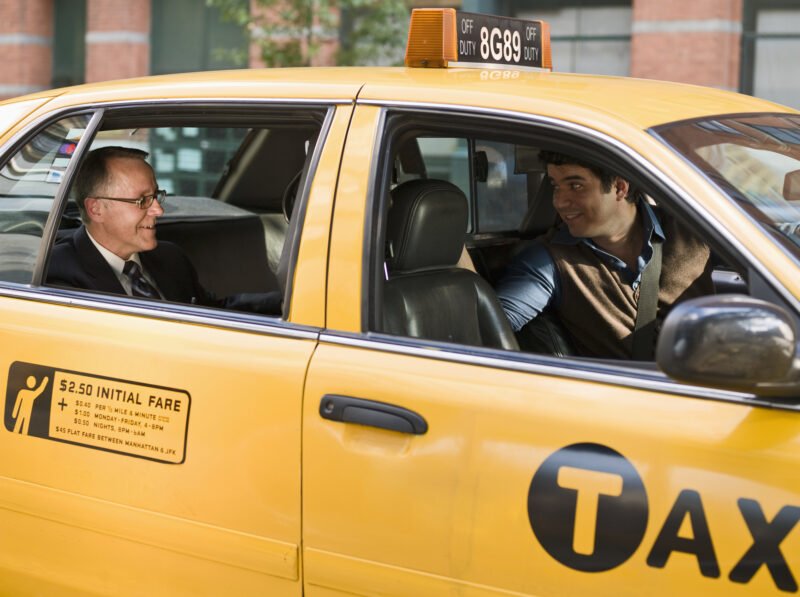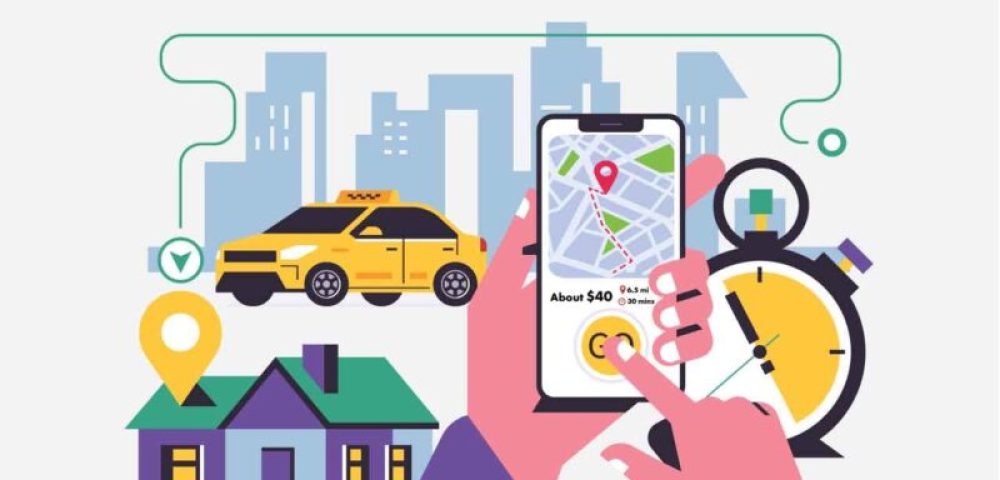The calculation of taxi fares is a pivotal component in the framework of urban transportation, influencing the decisions and satisfaction of both drivers and passengers. For riders, understanding the nuances of fare calculation transcends mere financial prudence; it empowers them to make enlightened choices among various transportation options, fostering a sense of control and anticipation over travel expenses. This comprehensive guide delves into the mechanics of taxi fare calculation, aiming to demystify the complexity surrounding it. By equipping readers with a thorough comprehension of the factors influencing taxi costs, this piece seeks to enhance the overall taxi-riding experience, promoting a more efficient and cost-effective approach to urban mobility.
Basic Components of Taxi Fare

Taxi fares are structured around several fundamental elements: the base fare, distance traveled, waiting time, and additional surcharges. The base fare represents the initial charge incurred the moment a passenger enters the taxi, effectively serving as a service entry fee. Distance traveled contributes to the fare based on the journey’s length, calculated through metered rates or advanced GPS technology to ensure precision. Waiting time charges come into play when the taxi is stationary or moving at a reduced speed, with costs accruing per minute to account for the driver’s time. Additional surcharges are levied under specific conditions such as airport pickups, late-night rides, or when navigating through tolls. These surcharges reflect external costs and regulatory fees, adding to the overall fare. Understanding these components is essential for riders aiming to navigate the complexities of taxi travel efficiently. If you have a hard time grasping them you should check out TaxiFare.
Understanding Base Fare
The base fare is the cornerstone of taxi fare calculation, representing the initial cost of engaging a taxi’s services. This charge is a fixed amount that applies as soon as a passenger boards the vehicle, intended to cover the immediate costs associated with making the service available, including the driver’s time, vehicle wear, and operational overheads. Variations in base fare can be attributed to several factors, such as geographical location, the taxi company’s pricing strategy, and the type of vehicle chosen. This variability underscores the importance of familiarizing oneself with the local taxi fare structure to anticipate costs accurately. The base fare sets the financial groundwork for the journey, with subsequent charges for distance, waiting time, and surcharges building upon it to compose the total fare.
Calculating Distance-Based Charges
Distance-based charges form a significant portion of the total taxi fare, with costs accruing according to the journey’s length. These charges are meticulously calculated using either traditional taxi meters, which incrementally increase the fare with each unit of distance, or through GPS technology that precisely calculates the total distance traveled. This dual approach ensures fairness and transparency in fare calculation, allowing passengers to pay in direct proportion to the journey undertaken. The method of calculation, whether metered or GPS-based, is crucial for ensuring that passengers are charged accurately for the distance covered, eliminating discrepancies and fostering trust in the fare system. By understanding how distance influences overall costs, riders can better estimate their travel expenses and make informed decisions about their transportation options.
Factoring in Waiting Time Charges

Waiting time charges are applied to account for periods when the taxi is stationary or moving slower than a predetermined speed, such as during heavy traffic or at stoplights. These charges compensate the driver for the time spent inactive or in slow motion, ensuring that the fare reflects both distance traveled and time spent in transit. The rate for waiting time is usually specified by the taxi service provider and can significantly impact the total fare during periods of congestion or delays. Understanding how waiting time is factored into the fare calculation is essential for riders, as it highlights the importance of considering traffic conditions and planning trips during less congested times to minimize costs. This component of the fare underscores the dynamic nature of taxi pricing, where both temporal and spatial factors play a pivotal role in determining the final charge.
Additional Surcharges
Surcharges are additional fees applied under specific circumstances, enhancing the complexity of taxi fare calculation. These can include airport fees, levied for pickups or drop-offs at airports due to higher operational costs; late-night charges, applied during overnight hours when demand may exceed supply; tolls, added when a journey requires passage through toll roads; and fuel surcharges, which may fluctuate with changing fuel prices. Surcharges are reflective of the external costs and regulatory charges that taxi operations may incur, directly affecting the total fare. For riders, awareness of these surcharges is crucial for accurately estimating travel costs and avoiding unexpected expenses. By considering potential surcharges when planning taxi rides, passengers can achieve a more predictable and transparent pricing experience, aligning their transportation choices with their budgetary constraints and preferences.
Tips for Estimating Fare Costs
Estimating taxi fares in advance is a savvy approach for riders aiming to manage their travel budgets effectively. To achieve this, passengers can utilize fare estimation tools and apps provided by taxi companies or third-party services. These tools typically require input of the starting point and destination, then calculate an estimated fare based on the distance, expected waiting times, and known surcharges. Additionally, understanding the local taxi fare structure, including base rates and common surcharges, can further refine these estimates. Riders should also consider the time of day and traffic patterns, as these factors can influence waiting times and the likelihood of encountering surcharges. By proactively estimating costs, passengers can compare different transportation options and make informed decisions, potentially avoiding surprise charges and managing their expenses more efficiently.
Understanding Fare Policies

Familiarizing oneself with the fare policies of local taxi services and ride-hailing companies is essential for a seamless travel experience. These policies outline how fares are calculated, including the components of the fare, such as base rate, distance charges, waiting time, and any applicable surcharges. They also detail payment methods accepted, cancellation fees, and procedures for dispute resolution. Knowing these policies helps riders set appropriate expectations for their journeys, preventing misunderstandings and disputes. It also enables passengers to assert their rights and seek recourse if they encounter issues such as overcharging. In an era where multiple taxi services and platforms are available, understanding these policies becomes even more critical, as it allows riders to navigate the nuances of each service and choose the one that best meets their needs and budget.
Factors Affecting Taxi Fares
Several dynamic factors can influence the final taxi fare, making it a variable and sometimes unpredictable element of taxi travel. Demand is a primary factor, with prices often increasing during peak times, special events, or in areas of high demand. Traffic conditions also play a significant role, as congestion can lead to higher waiting time charges. The time of day affects fares through night surcharges or reduced availability during off-peak hours. Additionally, the type of vehicle chosen can impact the cost, with luxury or larger vehicles typically commanding higher base fares and per-mile rates. By understanding these factors, riders can strategically plan their trips to avoid high-demand periods, opt for routes with less traffic, and select vehicle types that balance comfort with cost, ultimately influencing the total fare.
Tips for Saving on Taxi Fares
To economize on taxi fares, riders can employ several strategies. Sharing rides with others heading in the same direction can significantly reduce individual costs by splitting the fare. Choosing the most efficient route minimizes distance and, consequently, the fare, though it’s essential to balance efficiency with safety and comfort. Avoiding peak hours and high-demand areas can also lead to savings, as fares tend to be lower during off-peak times. Additionally, comparing fares across different taxi services and ride-hailing apps can uncover more affordable options, as rates can vary based on the service’s pricing model and current demand. Implementing these tips allows riders to enjoy the convenience of taxi travel while managing costs effectively.
Etiquette and Safety Considerations

Practicing good etiquette and prioritizing safety are paramount when using taxi services. Respect towards the driver, including polite communication and refraining from distracting behaviors, contributes to a positive experience for both parties. Safety measures, such as wearing seat belts, verifying the identity of the driver and vehicle, and sharing trip details with trusted contacts, are crucial steps every rider should take. Additionally, it’s important to follow local regulations and guidelines, such as mask-wearing or maximum occupancy rules. By adhering to these practices, passengers can ensure a respectful, secure, and comfortable journey, fostering mutual respect and trust between riders and drivers.
Conclusion
Understanding how taxi fares are calculated is fundamental for riders seeking to navigate urban transportation effectively. By grasping the components of the fare, familiarizing themselves with fare policies, and considering the factors influencing costs, passengers can make informed decisions that optimize their travel experience and budget. Additionally, employing strategies to save on fares, coupled with practicing good etiquette and prioritizing safety, enhances the overall taxi-riding experience. This guide aims to empower riders with the knowledge and tools necessary for a smoother, more informed, and cost-effective taxi journey in 2024 and beyond.
Related Posts:
- 3 Amazing Virginia Foods To Try And Where To Find…
- The Most Popular Sports to Bet on in New Zealand:…
- Where is the Best Place to See the Northern Lights:…
- How Do You Apply for Long-Term Disability: A…
- How Do You Respond to a Summons for Debt Collection?…
- Stress-Free Moving with a Baby: 10 Essential Tips…












